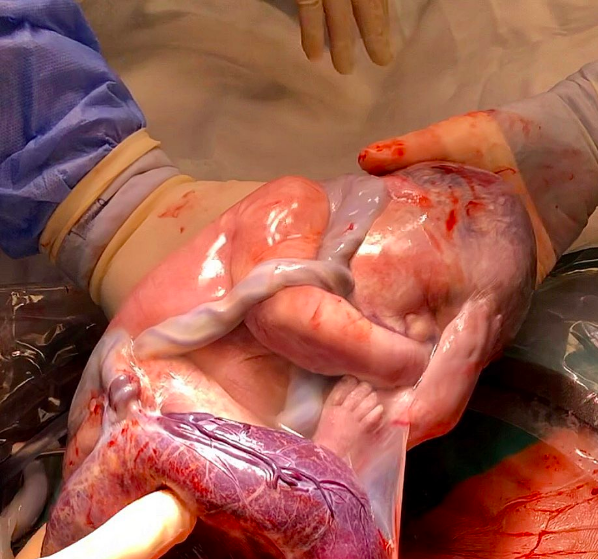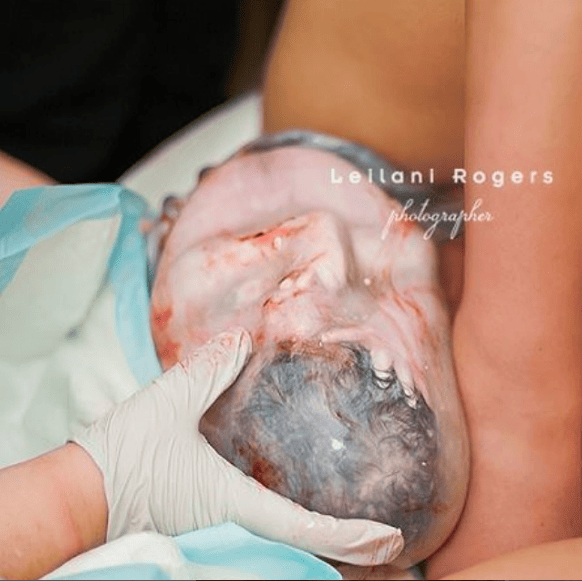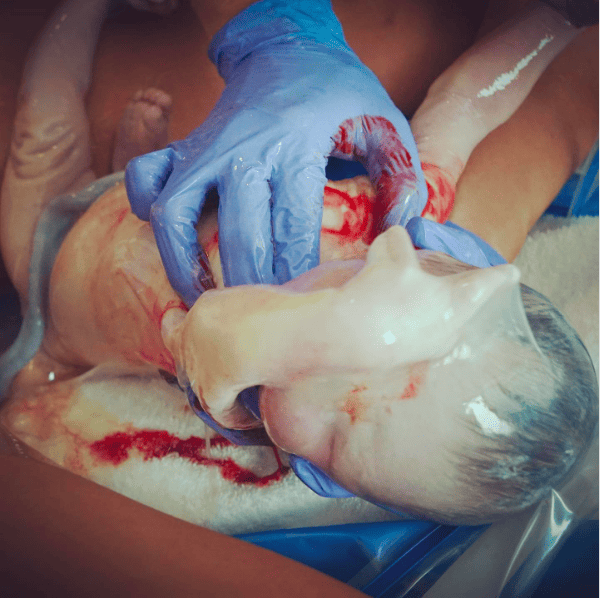
![]()
An en caul birth is considered rare. There are many cultural beliefs and superstitions regarding this unusual birth. Some people believe an en caul birth is magical and brings fame and fortune, but there are few benefits or risks. Some parents desire to try to have this type of delivery because it is natural and unique.4
Quick Contents
What Does En Caul Mean?

When the amniotic sac doesn’t break before your baby is born, you have an en caul birth. A baby born in the bag may also be called a “mermaid birth” or a “veiled birth.” It’s not a good or bad thing. It’s simply unusual.5
Usually, the amniotic sac breaks before contractions start or during labor or pushing. The fluid releases and continues to leak until your baby is born. A doctor or midwife may break the bag of water to induce or stimulate labor. If the bag is still intact when you start pushing, it will likely break with the increased pressure created. But if it doesn’t, you may have an en caul birth.6
“En caul” is different than “caul.” Caul means that a piece of the membrane is over your baby’s face, head, or chest when she is born, but the bag is not intact. The portion of the membrane may look like a veil or helmet.7
What an En Caul Birth Looks Like
During an en caul birth, your baby is born in what looks like a large squishy water balloon full of fluid. Often, a portion of the bag delivers first filled with liquid as it pushes out of your vagina. The rest of the sac with your baby’s head and body follows.6
The bag of water has two membranes that are fused. You can see through the membranes. Your baby will be curled up in the bag and get oxygen through the umbilical cord. You can see how your baby was nestled in your uterus before birth.6
After Delivery
Once your baby delivers en caul, the doctor, midwife, and nurses all ooh and ahh over the wonder and point it out to you. Then, your provider gently snips the bag with scissors or another instrument or pokes a hole with a finger. The water pours out. The membranes then cling to your baby. Your doctor or midwife carefully pulls them away from your baby’s face so she can breathe. Finally, you get to hold your baby for the first time. Cutting the cord and how your placenta delivers will be like any other birth.6
How Common is an En Caul Birth?

Very little information is available about how often an en caul birth occurs. The commonly quoted statistic is less than 1 in 80,000 live births. At this rate, many doctors, nurses, and midwives have never seen an en caul birth.1
En caul births can happen with both vaginal and Cesarean deliveries. With a cesarean birth, the surgeon can attempt to deliver your baby in the bag without breaking it. However, this is not a typical surgical procedure.1
An en caul birth is more likely with a preterm or small baby. They are also more common if you haven’t had any previous births.1
Midwife Perspective
En caul births are not tracked at delivery, so any statistic is only an educated guess. I’ve been a midwife for 22 years and a labor and delivery nurse before that. I have not kept track of how many en caul deliveries I have done, but it’s between 5 to 10 vaginal births. I have delivered over 5,000 babies. These numbers do not match with the 1 in 80,000 births estimate.
My numbers made me curious about how common en caul birth is. So, I surveyed 71 United States nurses, midwives, and OBGYN doctors, and this is what I found:
- Who: The survey included 58 labor and delivery nurses, one director of nursing, seven midwives, and five OBGYN physicians. Experience levels varied among those surveyed from under five to over 20 years.
- Percent: Of those surveyed, 80% have seen at least one en caul birth.
- Number: There was a wide range of how many en caul births those surveyed have seen, from only one in over 20 years of experience to “countless” in less than 20 years of experience. The majority have seen one or two such births.
What I take away from this small survey is there is a wide range of experience with en caul births. It happens more than the often reported 1 in 80,000 births. More research can help determine accurate numbers.1
Benefits of an En Caul Birth
The benefits of an en caul delivery involve avoiding the risks present when the amniotic sac breaks before delivery. Such risks include the following:2
- uterine infection
- placental abruption, when the placenta pulls away too soon
- umbilical cord compression leading to your baby not tolerating contractions
The most severe, umbilical cord compression happens in cord prolapse. A prolapse occurs when your baby’s umbilical cord falls through your cervix and into the vagina before your baby’s head. The cord gets squeezed between your baby’s head and the pelvic bones depriving your baby of oxygen. This almost always leads to an emergency Cesarean delivery.8
Amniotic fluid provides a cushion around your baby. It helps protect him and the umbilical cord from squeezing and bruising during labor and birth. An en caul birth gives this protection through the birthing process.9
Risks or Complications
An en caul birth has few potential complications. One case study found a severely low number of blood cells (anemia) in a baby born by Cesarean via en caul delivery. But the anemia was most likely caused by an abnormal umbilical cord and not the en caul delivery.3
If labor is not progressing, breaking the amniotic sac can stimulate labor. Your provider may recommend an internal fetal heart rate or contraction monitor. Either of these requires your water to be released. Hoping for an en caul birth could delay labor progress or recommended interventions and lead to complications.10
How to Increase Your Chance of an En Caul Birth
Labor must progress without breaking the amniotic sac to increase your chance of an en caul birth. It means not breaking your bag of water to speed things up if everything progresses normally. Induction of labor can make this difficult. You can still use Pitocin to stimulate contractions if needed.11
Whenever you have a cervical check to evaluate your labor progress, your doctor or midwife’s fingers risk breaking the amniotic sac. Limiting vaginal exams can increase your chance of an en caul birth.12
It is essential to talk with your doctor or midwife about your desires. Many doctors routinely break the amniotic sac during labor. Even if you decline this intervention, your body may have its own plans, and there is little you can do to control when your water naturally breaks.
En caul birth is fascinating, but there needs to be more research on how common it is or its risks and benefits. When a baby is encased in the amniotic sac, we get a small picture of how life was in the womb. It is one of the most natural and safe types of birth. But this type of birth is also difficult to plan for. Talk with your delivery provider to attempt this type of birth. It could also be their first time experiencing this type of unique delivery.


